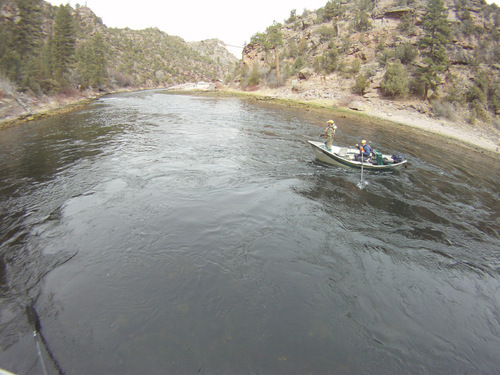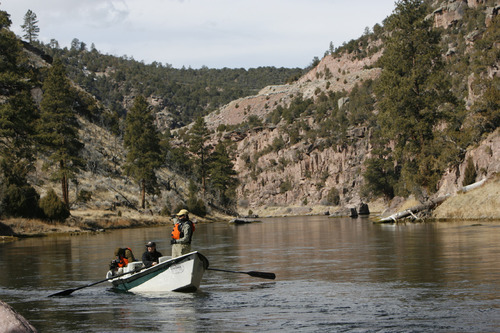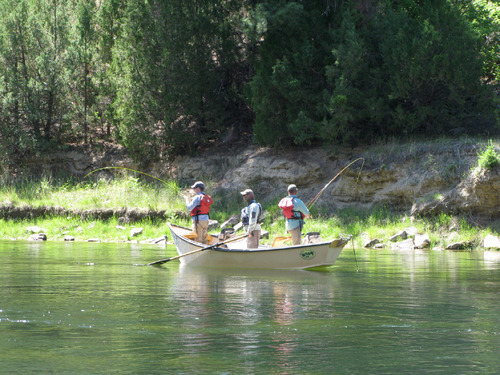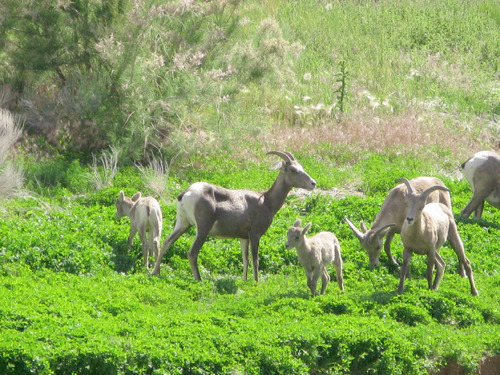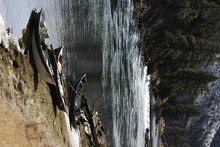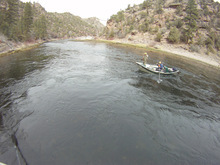This is an archived article that was published on sltrib.com in 2010, and information in the article may be outdated. It is provided only for personal research purposes and may not be reprinted.
Flaming Gorge National Recreation Area • As the owner and manager of the largest marina on this massive reservoir straddling the Utah and Wyoming border, Jerry Taylor has seen a fair share of threats to his business.
None have concerned him quite as much as a proposed pipeline that would suck water from the Green River above the reservoir and transport it more than 500 miles to the Front Range of Colorado.
"A lot of people are working on a daily basis to fight this," said Taylor, who, as a second-generation family member, has been managing Lucerne Marina near Manila since 1974. "We have to take this seriously. We aren't putting our hands in our pockets and waiting — we are being extremely active at opposing this."
Strong words for a man who could actually benefit from an increase in business at his ramp if the reservoir levels dropped dramatically. Taylor believes if Flaming Gorge were allowed to be drained to its minimum level allowed by law — 5,908 feet — that Lucerne would be the only boat ramp still touching water.
The proposed 560-mile pipeline was conceived by Aaron Million, who came up with the idea for providing water for thirsty Colorado developers while taking graduate classes at Colorado State University in 2003. The 42-inch-diameter pipes would pump up to 250,000 acre-feet of water out of the Green River, across Wyoming, over the Continental Divide and on to Pueblo, Colo., south of Denver and Colorado Springs.
The construction cost of the project, according to Trout Unlimited and reported by the state of Colorado, is to be more than $7 billion. It would then cost more than $123 million to run each year. Still, Million seems confident that the pipeline would make money.
It is the cost of losing the water that people in Utah's Daggett County and Wyoming's Sweetwater County are worried about. Trophy fishing for kokanee salmon and lake trout in Flaming Gorge and world-class fly fishing on the Green River below the dam could be severely harmed by the loss of water and that, in turn, would hurt local economies.
"It is almost impossible to visualize the project, it is so big," said Casey Snider, who is organizing sporting and other communities to oppose the pipeline as the northeastern Utah coordinator for Trout Unlimited's Sportsman's Conservation Project. "It would cost so much to build, so much to operate and do so much to harm this area. How can you fathom it? It is a huge drain, literally. It will drain the reservoir, drain the river and drain the economy."
Utah officials say Flaming Gorge Reservoir and the Green River below it support nearly 540,000 angler hours each year with an estimated annual value to Utah and Wyoming economies of more than $15 million.
Others say that is a gross underestimate, and that the total revenue generated by the waters of Flaming Gorge National Recreation Area is much greater.
Not figured into the equation is, of course, the aesthetic value a trip to the area provides for individuals and families.
Utah Public Lands Policy Coordination director John Harja sent a letter to the U.S. Army Corp of Engineers, which is conducting a draft of the environmental impact statement on the project in an effort to determine if it is feasible, listing a number of concerns should the pipeline become a reality.
Among the worries listed in the letter:
• Wide fluctuations of water levels at Flaming Gorge would create ideal conditions for noxious weeds along the shore, affecting waterfowl, mule deer, pronghorn, sage-grouse and other species. Open shorelines may become inaccessible for recreation.
• Diminished flows on the Green River below the dam will affect species of concern like the northern river otter, bald eagle, peregrine falcon, osprey, Lewis' woodpecker, southern willow flycatcher and yellow-billed cuckoo.
• A reduction of flows into the reservoir will inhibit flow recommendations coming out the dam. The recommendations were agreed upon by multiple agencies to benefit endangered fish (razorback sucker, Colorado pikeminnow, humpback chub and bonytail) in the Green River.
The main sport fish of Flaming Gorge — kokanee salmon, lake trout and smallmouth bass — are already facing a number of challenges in a delicately balanced ecosystem that has been rocked by the recent appearance of illegally introduced burbot. Lower and fluctuating water levels will only add to the challenges.
"The two states have been spending a lot of money on kokanee for the Gorge, and the Fish and Wildlife Service has been trying to help us out with kokanee," said Ryan Mosley, Flaming Gorge/Green River project leader for the Utah Division of Wildlife Resources (DWR). "Previous research has shown us that 95 percent of all kokanee recruitment comes from in-the-lake spawning. Draw-downs will be a direct impact on the salmon. It will trash their redds [spawning beds]."
Fishing guides, regular anglers to the Green and biologists agree that a major flush of the river below the dam is needed every once in a while to stimulate invertebrates — insect life the fish depend on — control invasive New Zealand mudsnail numbers, move sediment deposits and encourage growth for native plants like cottonwood trees.
The Bureau of Reclamation is in charge of dam operations, but it is the Western Area Power Administration that has the say on flows leaving Flaming Gorge, and that agency is reluctant to give up the water it would take to do a major flush of the Green River. The chances of a major flush become even more unlikely if the pipeline has drawn the reservoir down to its minimum pool.
Some say concern over the Million Pipeline is nothing but wasted energy because surely all Wyoming officials have to do is say they don't want the project to happen and it will be shelved.
Not so.
Water rights in the West are complicated and sacred. The Colorado River Compact of 1922 and the 1948 Upper Colorado River Compact are the granddads of water law.
Million realized Colorado was not using its allowed allotment of Colorado River water (the Green is a main tributary to the Colorado) as dictated in the 1948 Compact and started looking for ways to grab his state's 51.75 percent take of the resource. Utah has the next largest stake at 23 percent, Wyoming has 14 percent and New Mexico gets 11.25 percent.
If Million comes up with the money and acquires all the permits and the Army Corp of Engineers deems it a suitable plan,the pipeline could happen.
That doesn't make it right, according to Dan McCool, director of the Environmental Studies program at the University of Utah and a water policy specialist.
"The idea that you can solve water problems by building pipeline is hopelessly out of date,"McCool said. "It doesn't do any good to build pipeline to a river where the water is already over-allocated. Every gallon Million were to take out of the river is a gallon less for somebody else downstream. As long as the Colorado River Compact is in place, these kinds of absurdities will continue. It needs to be renegotiated, but no one wants to change what they already have."
At a meeting in July, Rena Brance, the regulatory specialist for the U.S. Army Corp of Engineers, said 7,000 comments about the project have been received and that the draft of the environmental impact statement will not be out until late 2016, with the final draft due out in 2018 and a Record of Decision on the Million Pipeline Project not available until 2019.
So Taylor will keep his 185 boat slips at Lucerne Marina full, lake trout anglers will keep trying to jig up the next state record at more than 52 pounds, fisheries biologists will keep trying to figure out what makes kokanee salmon in the Gorge tick and anglers on the Green will continue begging for a flush flow.
And everybody in Wyoming and Utah will keep wondering if the crazy idea of a 500-mile pipeline over the Continental Divide could really happen.


